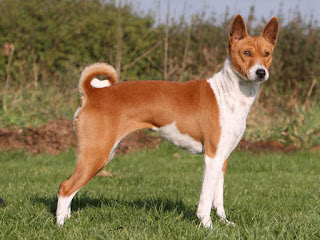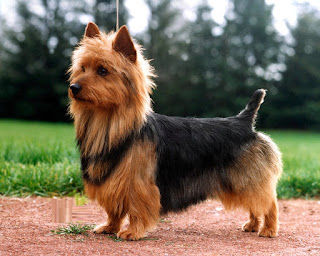Introduction:
The place of origin of Beagle is England. But its ancestors are possibly from France or Greece. The dog is a hound breed. Today it is used for filed trails and trailing or pursuing rabbits. The life span of the breed is 12-13 years. It is also called as English Beagle.

Origin / History:
Nature / qualities:
The Beagle is brave, intelligent and very sociable. They are one of the most expressive breeds. They are generally good with other dogs. On the other hand they should not be trusted with non-canine pets because of their hunting instincts. The Beagles are sweet, gentle, lively and very curious dog. They have one of the strongest noses in doghom. They very possessive of food, they won’t leave food left in the kitchen. They are very happy dogs. They would become disastrous if enough time and stimulation is not given to them. They have become popular family pets because of their calm and nature. They are always ready to learn.
Physical Appearance:
The height of the Male Beagle is 14-16 inches (36-41 cm) and the weight is22-25 pounds. The height of the Female Beagle is 13-15 inches (33-38 cm) and the weight is 20-23 pounds (9-10 kg). The Beagle is a small dog and lean dog. It is slightly longer than it tall. They have brown or hazel eyes that show pleading expression. The nose is black, showing full nostrils for scenting. They have long and wide ears. The tail is high and tight. The color of the breed is any hound color; most common are black, tan and white; red and white; and pale tan and white. Feet and tail tip should be white.
Health Concerns:
The Beagle is naturally strong and healthy breed. But some are prone to epilepsy, heart disease, eye and back problems, chondroplasia.
Grooming:
Weekly brushing is required for this breed. The toenails should be clipped. The teeth and ears should be kept clean to prevent infections. Proper amount of physical and mental exercises should be given to them.
Cost:
The cost of purchasing this breed is $ 600 USD
Advantages:
The place of origin of Beagle is England. But its ancestors are possibly from France or Greece. The dog is a hound breed. Today it is used for filed trails and trailing or pursuing rabbits. The life span of the breed is 12-13 years. It is also called as English Beagle.

Origin / History:
- The Beagle is one of the most popular scent hounds
- The Beagle was developed in great Britain about 150 years ago
- In 1884, Beagle was accepted as a breed by the American Kennel Club
- Beagles boast a 90% accuracy in sniffing out contraband at airports
- From 1953 to 1959 the Beagle was ranked number one on the list of the American Kennel Club's registered breeds
- In 2005 and 2006 they ranked 5th out of the 155 breeds registered
Nature / qualities:
The Beagle is brave, intelligent and very sociable. They are one of the most expressive breeds. They are generally good with other dogs. On the other hand they should not be trusted with non-canine pets because of their hunting instincts. The Beagles are sweet, gentle, lively and very curious dog. They have one of the strongest noses in doghom. They very possessive of food, they won’t leave food left in the kitchen. They are very happy dogs. They would become disastrous if enough time and stimulation is not given to them. They have become popular family pets because of their calm and nature. They are always ready to learn.
Physical Appearance:
The height of the Male Beagle is 14-16 inches (36-41 cm) and the weight is22-25 pounds. The height of the Female Beagle is 13-15 inches (33-38 cm) and the weight is 20-23 pounds (9-10 kg). The Beagle is a small dog and lean dog. It is slightly longer than it tall. They have brown or hazel eyes that show pleading expression. The nose is black, showing full nostrils for scenting. They have long and wide ears. The tail is high and tight. The color of the breed is any hound color; most common are black, tan and white; red and white; and pale tan and white. Feet and tail tip should be white.
Health Concerns:
The Beagle is naturally strong and healthy breed. But some are prone to epilepsy, heart disease, eye and back problems, chondroplasia.
Grooming:
Weekly brushing is required for this breed. The toenails should be clipped. The teeth and ears should be kept clean to prevent infections. Proper amount of physical and mental exercises should be given to them.
Cost:
The cost of purchasing this breed is $ 600 USD
Advantages:
- The Beagles loves everyone, a happy little tail-wagger
- Excellent with children
- They become very much destructive and bark obsessively when left alone



